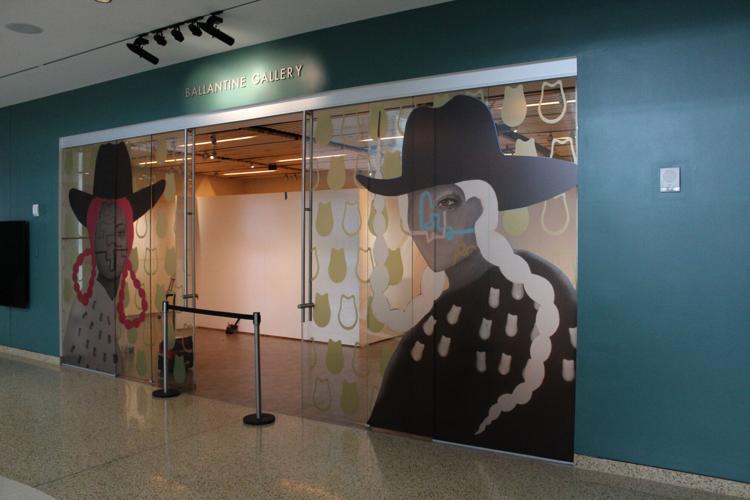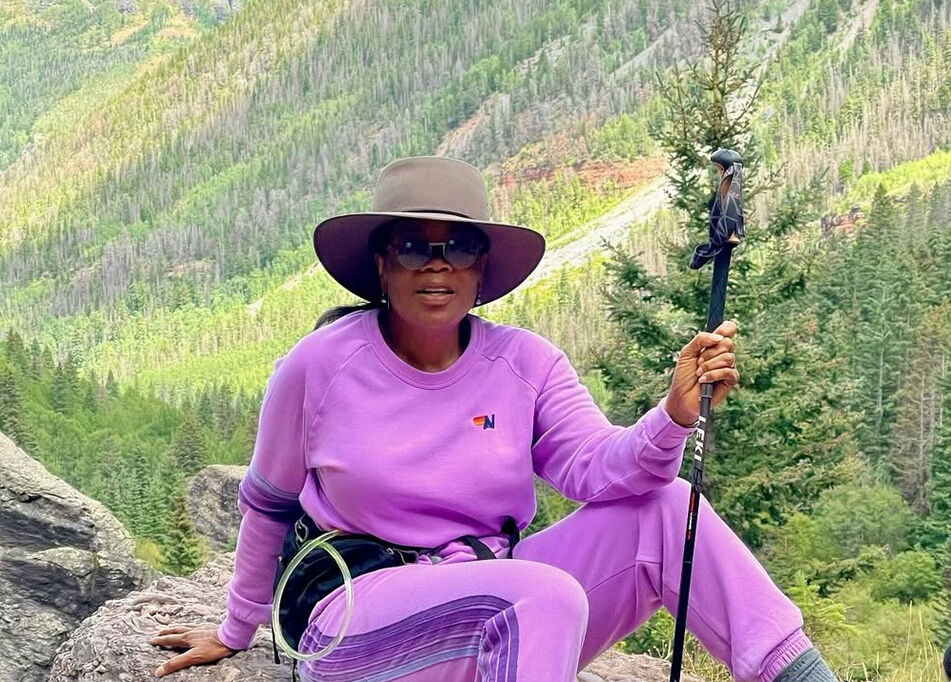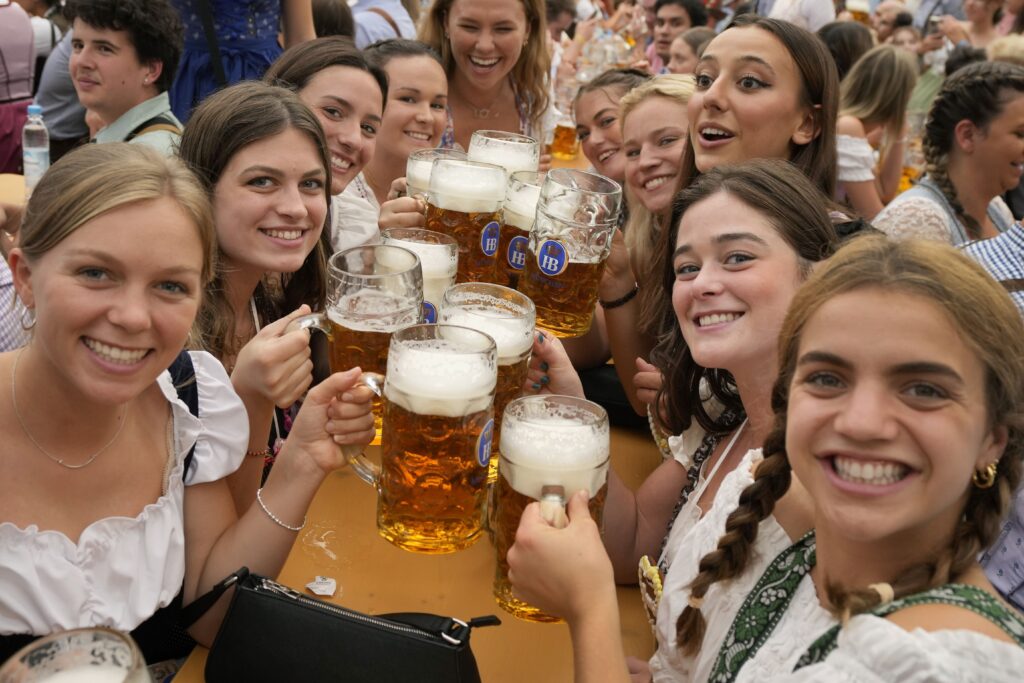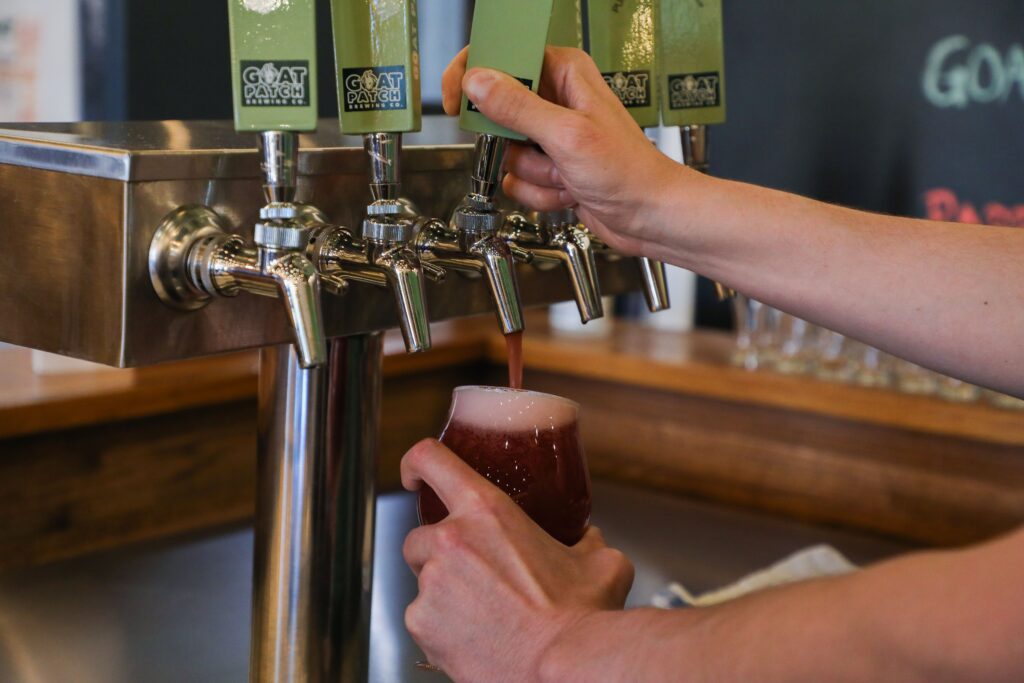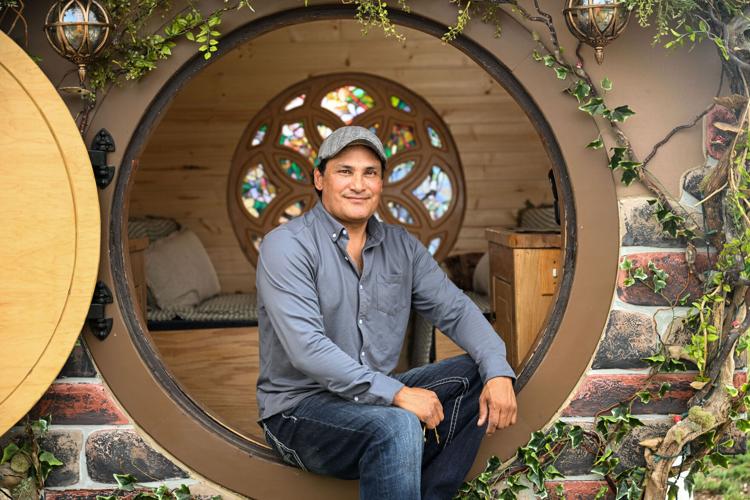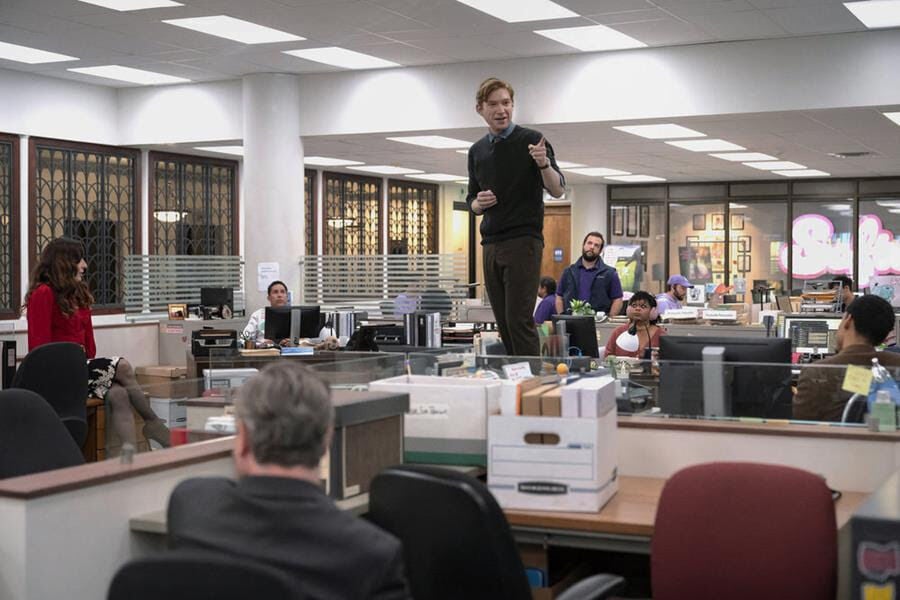History Colorado hosts art from Danielle SeeWalker to showcase Indigenous urban living, commodities

“I miss you but I’ll never say it” by Danielle SeeWalker. History Colorado is hosting a new exhibition, “But We Have Something to Say”, showcasing artwork from the Lakota citizen. “A lot of my work is focused on storytelling,” SeeWalker says. “Each painting sort of has a story, whether it’s a story about boarding school or a story about cutting our hair or a story about living on reservation or being an urban Indian.”
Courtesy of Brian Tschumper and Danielle SeeWalker
History Colorado just unveiled a new exhibit, “But We Have Something to Say,” showcasing artwork from Lakota citizen Danielle SeeWalker from the Standing Rock Sioux Tribe.
The exhibition hosts SeeWalker’s contemporary artwork side-by-side archival items from the museum’s collections.
Using various mediums, including acrylic on canvas and beadwork, SeeWalker uses art to explore issues important to Indigenous communities, especially Native women. While SeeWalker is often inspired by historic photos and objects, she wants to challenge visitors to reconsider their preconceptions of Indigenous art by telling unexplored stories.
“A lot of my work is focused on storytelling,” SeeWalker said. “Each painting sort of has a story, whether it’s a story about boarding school or a story about cutting our hair or a story about living on reservation or being an urban Indian. So you know, these are sprinkled throughout as well.
In crafting the exhibition, SeeWalker worked with Felicia Bartley, the museum’s assistant curator of Indigenous culture and heritage. Together, the pair explored the museum’s archives and selected historic objects to tie everything together.
“A lot of the things — when I was looking through the archives — I found were mislabeled, misidentified objects. For instance, there was something that was labeled as a belt, but I know that it’s actually a hairpiece,” SeeWalker said. “It’s really disheartening and sad, but at the same time, it was really beautiful to be able to see these objects firsthand and really just lay my eyes on some of these pieces that I haven’t seen before.”
One idea the exhibition will explore is food — specifically looking at the impact of federally subsidized food on Native American communities. One item that will be displayed is a flour sack from 1888 that was part of ration distributions.
“This is direct proof of those rations and what was promised to Native peoples,” Bartley said. “I’m really excited about the flour sack just because it’s a deeper dive into thinking about a certain time that was really shaping the world that we Native people live in today.”
When Native Americans were forced onto reservations and no longer able to hunt or source their food, SeeWalker said, the federal government provided food commodities such as flour, lard, sugar and canned meat that their bodies were not accustomed to, leading to health issues.
“Commodities are something that I grew up on as well, and still continue to be handed out to Native Americans on reservations today. So this is a program that’s been going on for over a century,” SeeWalker said.
“Taking away our food sovereignty has led to some of the most devastating health disparities that our people have faced because of these foreign foods that we’ve never had in our bodies like sugar, and flour, processed meats, things like that, and so today, Native Americans have some of the highest rates of diabetes in the world.”
The exhibition also will highlight the role of Denver in Native American urban relocation, Bartley said. This portion of the exhibition will feature an 1965 newsletter from the Indian Times.
“This is a very specific glimpse into Denver’s history when we’re thinking about Native people coming from all around the country from the U.S. into Denver to relocate and try to take advantage of what the United States was supposedly offering,” Bartley said. “I’m really excited for this newsletter just to be in the collection for people to take a look at it in the future and to also promote that Native people have also been living in urban locations for quite some time in Denver.”
Other historical objects that will be displayed alongside SeeWalker’s work are 19th-century hair ornaments, beaded spoons, historic documents and images, and moccasins.
“Danielle and I talked and we had a really good conversation and we’re both getting inspired by different pieces in the collection,” Bartley said. “Looking through the collections together and seeing what excited us and then for me to have my due diligence and check out whether or not something in the collection was taken in through an ethical way.”
Connecting with historical items, Bartley hopes visitors leave understanding that Native Americans are still here.
“Native people can live in the city and them living in the city doesn’t make them any less Native,” she said. “I hope that people can begin to understand and perceive Native art as a form of historical recitation. That it’s not just purely myths or fantasy or fiction, but this is a valid form of history.”







